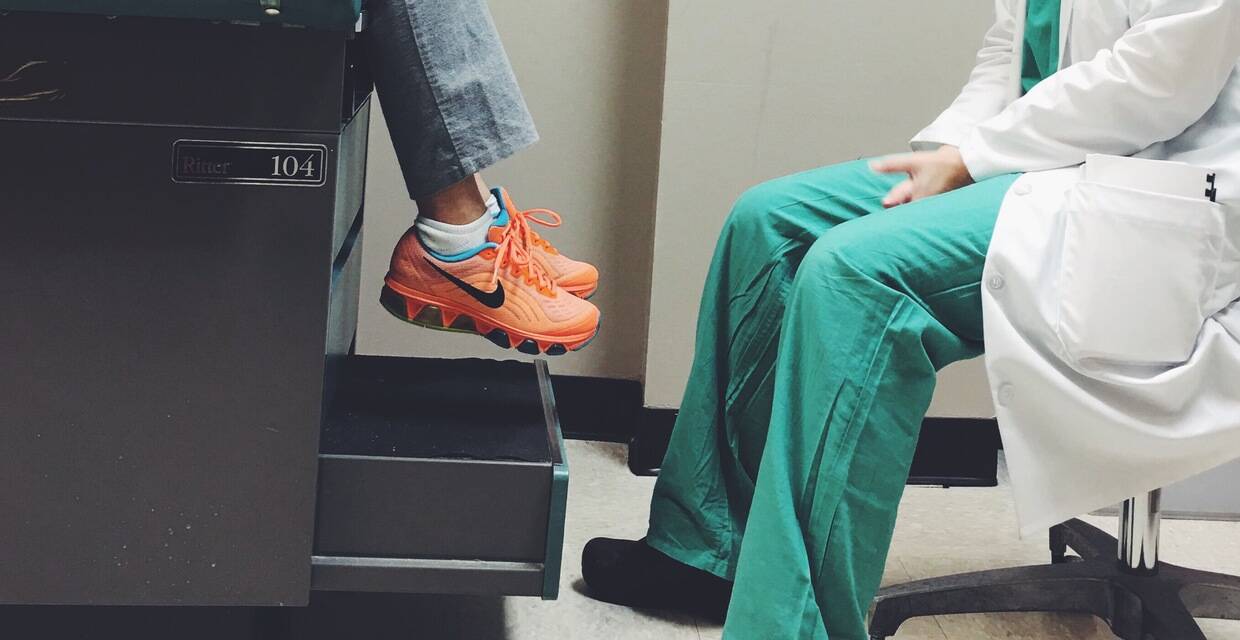Convenient care and value-based care are two buzz phrases that everyone in healthcare—from payers to providers to, yes, patients—has heard of. While these trends are critically important in shifting the burden of care away from emergency rooms and creating a better consumer experience for medical patients, there’s one key element that is often overlooked: bedside manner at urgent care.
Visits are getting shorter but this doesn’t take away the need for physician’s at all healthcare facilities, urgent care included, to be mindful of the way in which they interact with patients. Quite the opposite, in fact. Patient demands are steadily rising, more patients are turning to urgent care with routine medical concerns, and more urgent care centers are opening across the country. Having a pleasant and respectful bedside manner can mean the difference between patients flocking to your urgent care center and running to your biggest competitor.
When patients feel comfortable, heard, and cared for, their perception of their physician—and the facility they’re being cared for at—goes up. In turn, this creates loyalty and encourages patient engagement. Below, learn four things healthcare consumers really want when they see a doctor.
1: Listen More Than You Talk
This may seem counterintuitive. You have a waiting room full of people who need care and one of their biggest demands is being seen quickly. However, part of good bedside manner is actively listening to your patient’s problem and seeking to understand what’s really going on—before you offer a diagnosis.
The simple act of saying “Go on” to a patient who begins to tell you why they’re at urgent care will help ensure that they feel heard and that you actually care about helping them feel better.
2: Practice Empathy
Beyond listening, urgent care physicians should work to practice empathy with each and every patient. Empathy refers to the ability to understand and share the feelings of another. While it may seem like this could take too long, extending the visit unnecessarily, the opposite is true. Empathy can take as little as one minute but have a lasting impact on the physician-patient relationship.
When your patients speak, listen for clues about their life—is their child graduating from high school? Did they start a new job? Are they going on vacation? Ask a genuine question about something that they mention. Spending 60 seconds or less on empathy can help you build rapport with your patient and, in some cases, may even help you treat them more effectively.
3: Sit Down When You’re With Your Patients
In 2012, a randomized, controlled study was conducted with 120 adult post-operative inpatients admitted for elective spine surgery. During each visit, the physician either stood up while talking to the patient or sat down while talking to the patient. The actual lengths of the interactions were compared to patients’ perception of how long the physician interacted with them.
The findings were fascinating: patients perceived that the physician was with them longer when he sat, even though he actually spent less time with patients while sitting than he did while standing. Overall, the study found that “simply sitting instead of standing at a patient’s bedside can have a significant impact on patient satisfaction, patient compliance, and provider-patient rapport, all of which are known factors in decreased litigation, decreased lengths of stay, decreased costs, and improved clinical outcomes.”
While this study was done in a hospital setting, the same practice should also be used in urgent care centers. Along with making eye contact and demonstrating open and welcoming body language, sitting with patients is a powerful way to build rapport and make patients feel cared for.
4: Be Transparent
Together with the Urgent Care Association, Solv surveyed 1,386 Americans about their needs and attitudes when engaging with the U.S. healthcare system. One of the biggest demands healthcare consumers are making today is for transparency. Not only do they want to know when they’ll be seen (yes, even at urgent care, 70% of patients prefer scheduling an appointment to walking in), they also want to know how much they’ll be expected to pay for their visit—before it happens.
Urgent care physicians can adopt a practice of transparency as part of exhibiting a good bedside manner. This includes being clear about whether extra tests needed for diagnosis or treatment will cost most, using clear language instead of medical jargon, and being open about the patient’s issue. When patient’s feel as if something is being kept from them or the wool is being pulled over their eyes, they are more likely to find an alternative provider.
Having a good bedside manner as an urgent care doctor is critical. As healthcare consumers are flocking to urgent care more than ever before (over the course of 6 months, 1.5 million urgent care appointments were booked through Solv), bedside manner needs to become a part of the strategy for positive, effective patient engagement instead of an afterthought. Doing this will ensure that your urgent care center climbs to the top, maintains a loyal customer base, and keeps a healthy bottom line.



